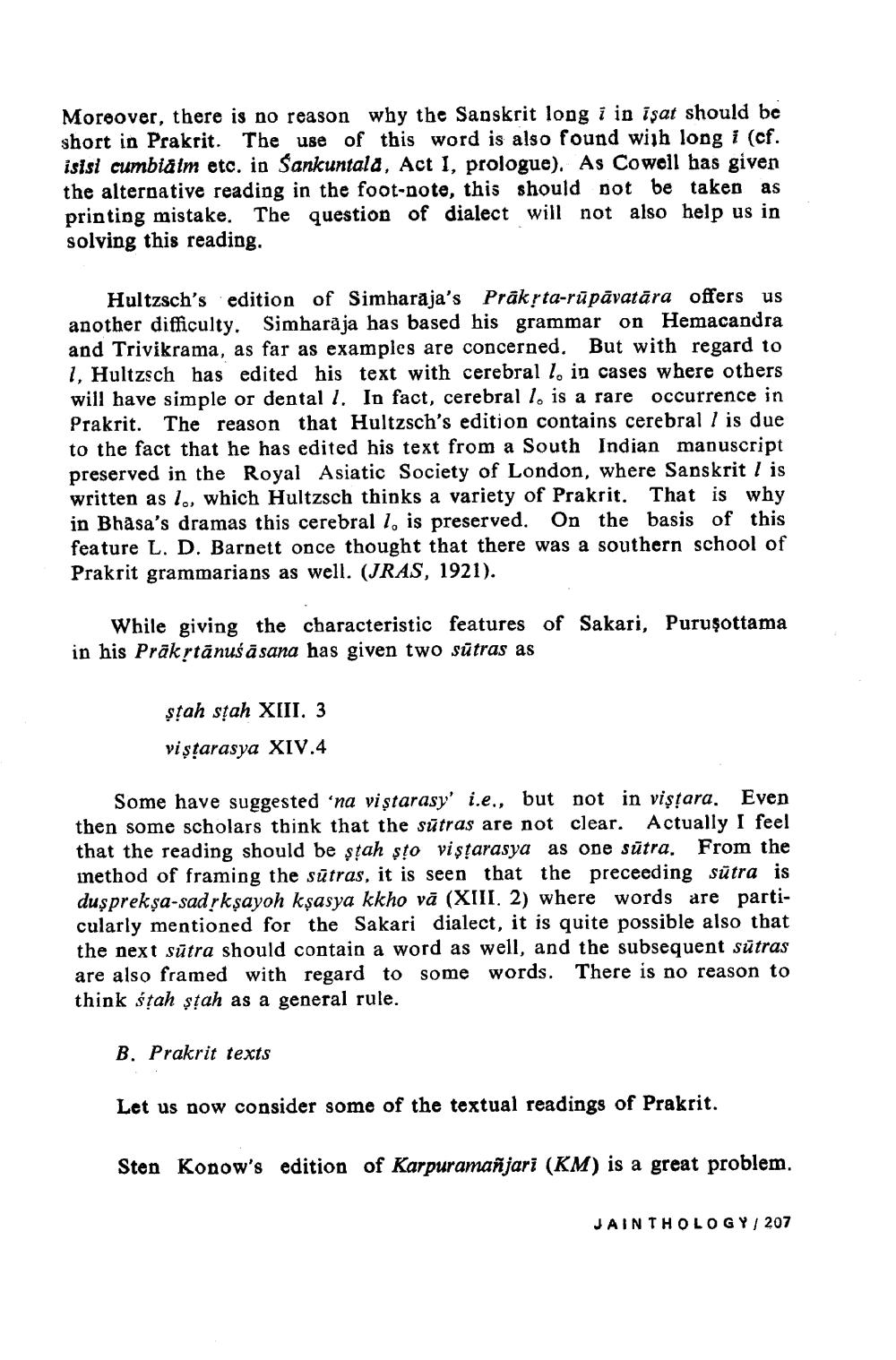________________
Moreover, there is no reason why the Sanskrit long i in isat should be short in Prakrit. The use of this word is also found wish long i (cf. isisi cumbialm etc. in Sankuntala, Act I, prologue). As Cowell has given the alternative reading in the foot-note, this should not be taken as printing mistake. The question of dialect will not also help us in solving this reading.
Hultzsch's edition of Simharaja's Prākrta-rūpāvatāra offers us another difficulty. Simharaja has based his grammar on Hemacandra and Trivikrama, as far as examples are concerned. But with regard to 1, Hultzsch has edited his text with cerebral l, in cases where others will have simple or dental I. In fact, cerebral l. is a rare occurrence in Prakrit. The reason that Hultzsch's edition contains cerebral I is due to the fact that he has edited his text from a South Indian manuscript preserved in the Royal Asiatic Society of London, where Sanskrit I is written as le, which Hultzsch thinks a variety of Prakrit. That is why in Bhasa's dramas this cerebral 1, is preserved. On the basis of this feature L. D. Barnett once thought that there was a southern school of Prakrit grammarians as well. (JRAS, 1921).
While giving the characteristic features of Sakari, Purusottama in his Prāk stānuśā sana has given two sūtras as
ştah sțah XIII. 3 vi starasya XIV.4
Some have suggested 'na viştarasy' i.e., but not in viştara. Even then some scholars think that the sūtras are not clear. Actually I feel that the reading should be ştah sto vişțarasya as one sutra. From the method of framing the sūtras, it is seen that the preceeding sütra is dusprekşa-sad ykşayoh kşasya kkho vā (XIII, 2) where words are particularly mentioned for the Sakari dialect, it is quite possible also that the next sūtra should contain a word as well, and the subsequent sutras are also framed with regard to some words. There is no reason to think śțah ştah as a general rule.
B. Prakrit texts
Let us now consider some of the textual readings of Prakrit.
Sten Konows edition of Karpuramañjari (KM) is a great problem.
JAINTHOLOGY, 207




